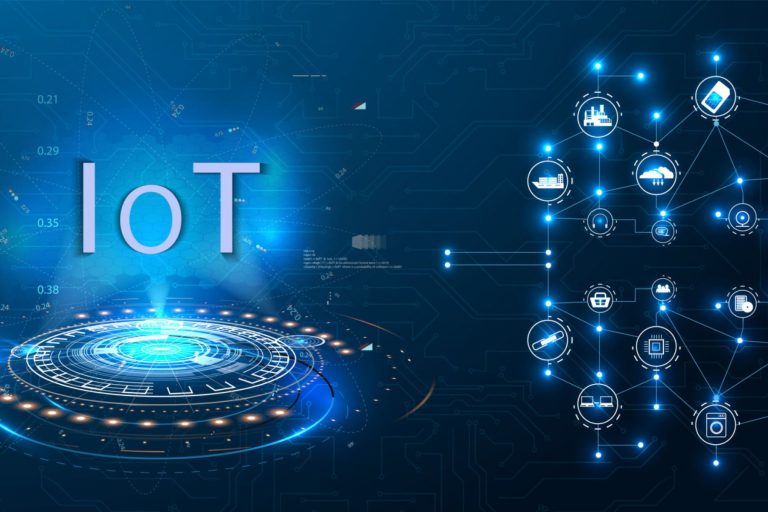Connectivity is the crux of Internet of Things (IoT)! IoT devices and solutions constantly rely on a complex network which is made up of routers, gateways, applications and other relevant devices that result in real-time connectivity for enterprises.
If there are any IoT Connectivity Challenges that are hindering your enterprise from running at full steam, then this blog is for you!
Coming back to real-time connectivity, why is it so important?
With realtime connectivity and communications, enterprises can easily achieve effective data sharing which in turn enables all the connected devices to perform every task accurately!
IoT Connectivity – What is It ?
IoT connectivity refers to the mechanism of connectivity between different parts of an IoT solution/ecosystem.
What does an IoT ecosystem contain?
- IoT Devices
- Routers
- Platforms
- Sensors
- Applications & other allied systems
And in order for these systems/devices/technology solutions to communicate with each other, you need connectivity.
Therefore, connectivity becomes the bedrock of an IoT ecosystem. This means, that without connectivity, IoT will not exist.
With connectivity, IoT ecosystems/solutions can work effectively and deliver the business value that an enterprise expects.
The Importance of IoT Connectivity
As mentioned earlier, IoT Connectivity is a key element for IoT solutions.
And when it comes to connectivity options, there are a lot of them out there in the market and it all depends on the needs of an enterprise.
These needs can be based on range, bandwidth, power consumption so on and so forth.
That’s why you need to make careful considerations while choosing a connectivity option for your enterprise.
Both startups and leading enterprises leverage cutting-edge IoT solutions and devices to create new products.
Then, they use these brand-new problem-solving, efficiency-increasing products to capture more market share which in turn offers a ton of growth opportunities.
Choosing the right kind of connectivity option can result in success and failure to do so will result in failure!
Look at these statistics to know why IoT is a big deal:
- The global market value of Industrial IoT was at a staggering USD 263 billion in 2021.
- By 2028, these numbers will increase to a whopping USD 1.1 trillion!
- And by 2030, close to 8 billion or more IoT devices will find their place across a wide range of industry verticals. (They will become a necessity!)
And that is why you need to up your game by identifying the most common connectivity challenges in IoT and finding solutions for the same. Let’s look at some of the most common IoT Connectivity problems that you will come across.
Three Common IoT Connectivity Challenges& Solutions
Did you know?
More than 70% of businesses stated that they have connectivity challenges when it came to IoT projects. Now, that’s a big number and chances are your enterprise may be facing some issues just the ones in the 70% bracket.
So, here are some challenges that maybe plaguing your IoT connectivity and solutions that can get help your enterprise get a competitive edge!
1.The Scalability Challenge
According to an old report, close to 125 devices (on average) are connected to the internet each second!
Fast forward to 2022 and the global IoT devices connected to the internet reached a mind-boggling 144 billion! That’s an 18% increase!
With great power comes great responsibility!
Similarly, if your business needs are increasing and you need to scale ASAP then you need to identify the right IoT systems that can handle future needs.
And this responsibility falls on the IT managers. They need to find out a strategy or a solution to scale the existing infrastructure to meet future demands.
The Solution
Problems with scalability can also lead to issues in pricing, bandwidth, and the complexity of connecting devices.
Scalability difficulties will be taken care of if you choose an easy-to-maintain understand and maintain architecture. After that, if you need to scale, you can do it easily because, in the initial stages, you chose a simple architecture!
Additionally, it would be a better choice to automate bootstrapping. This can help minimize costs, save time and increase efficiency when you do decide to scale up your Industrial IoT solutions.
2. The Compatibility Challenge
An important trait of an ideal IoT development solutions team is the ability to comprehend the significance of legacy system compatibility within the IoT ecosystem.
Due to the rising needs of the business sector, integration with existing technologies/solutions is essential but that doesn’t mean it is easy.
Having custom operating systems can also result in reduced system interoperability. It may result in several independent silos that are detrimental to your firm.
Enterprises that depend on IoT connectivity must ensure that the system can connect to other devices.
Solution
Maintaining an up-to-date system is one way for enhancing compatibility. When several devices use different software versions, compatibility difficulties are inevitable.
Another option is to do concurrent performance evaluations. Checks to ensure that the connectivity of IoT devices can function in various settings.
3. The Security Challenge
Statistics indicate that IoT-connected devices are often targeted within five minutes of accessing the internet, making security a big worry for enterprises. In 75 percent of cases, routers are the primary source of IoT security breaches.
As more and more devices become internet-connected, the number of attacks will only rise.
Since every IoT device and application is linked to multiple networks, the requirement for better security strategies & systems becomes all the more crucial. Moreover, being linked to numerous routers makes it simpler for potential thieves to target the equipment despite the security precautions in place.
Solution:
A simplified, decentralized Application Enablement Platform can be effective.
In contrast to a centralized approach, in which encrypted data travels from the client to the database and back, leaving it exposed to assaults, decentralized systems store encrypted data locally. A decentralized system establishes a direct connection with the client for data transfer.
IoT and enterprise mobility can also be combined to avoid data breaches. Some of the major benefits of IoT and enterprise mobility combined include:
- Enhanced ability to prevent data breaches
- Improved security, and
- Adherence to compliance standards in the workplace.
IT staff can also be prepared for any scenario, such as process shutdowns, bottlenecks, or operational data breaches with a list of suspects thanks to the networked infrastructure they have at their disposal.
Conclusion
There is no single course of action that can address all of the connection difficulties in your IoT ecosystem. our IoT application and other commercial goals will influence the network and bandwidth you choose.
For an improved and more efficient adoption of the Internet of Things, a reputable IoT development company in San Francisco like ARSR can be of huge help. Take advantage of such experienced service providers to seamlessly adopt the best IoT practices and minimize costs while increasing efficiency in the long term!






